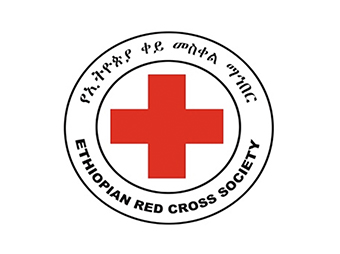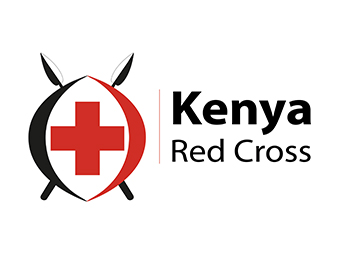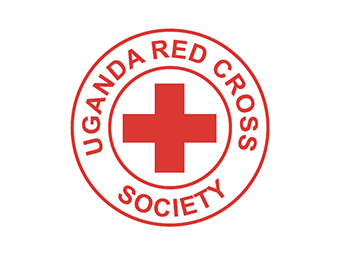Innovative Approaches to Response Preparedness
The Innovative Approaches to Response Preparedness (IARP) project in Ethiopia, Kenya and Uganda is implemented by the National Red Cross Societies of the three countries and supported by the Netherlands Red Cross, the British Red Cross, the 510.global data team and the Red Cross Red Crescent Climate Centre. The project aims to develop anticipatory actions and institutionalized early action protocols (EAPs) for flood and drought hazards in vulnerable areas in Ethiopia, Kenya and Uganda. This is supported by capacity development in areas of data preparedness and cash and voucher assistance. The development of the EAPs is done in close collaboration with national government agencies and UN agencies to ensure the harmonization of triggers (alert thresholds), early warning messages and anticipatory actions.
Key facts
Start/end date
2018-2022
Hazards covered
Floods; droughts
Regions covered
National-level plans for Ethiopia, Kenya and Uganda, with implementation focusing on flood- and drought-prone areas in these countries.
Early action sectors
Flood-risk interventions (e.g., strengthening riverbanks, improving drainage, use of sandbags)
Drought-risk interventions (e.g., distribution of drought-resilient seeds, water management)
Cash- and voucher-based assistance
Strengthening data capacity (e.g., impact-based forecast modelling, rapid assessment and registration)
Anticipatory action protocols/plans in place
Six EAPs to be developed: one on flood and one on drought for each of the three countries.
Activations
None to date
Population reached during activations
None to date
Key actors/implementing partners
Ethiopia Red Cross Society; Kenya Red Cross Society; Uganda Red Cross Society; British Red Cross; Netherlands Red Cross; 510 data team, Netherlands Red Cross; Red Cross Red Crescent Climate Centre
Photo by the Kenya Red Cross Society
Find out more about the programme and on the process of IARP throughout in this interactive presentation
Project description
Disasters and development are inherently linked. Disasters can wipe out decades of hard-fought gains in poverty reduction and the development of communities. In addition, disasters disproportionally affect poor people: low levels of development make a population more exposed and vulnerable to disasters. Poor households have few options in their coping strategies. They often sell their livestock and other assets, cut down on food consumption, or migrate to other areas to find seasonal work. In such situations, they might also feel forced to withdraw their children from school to cut costs and involve them in contributing to the household income. These negative coping strategies might provide short-term relief, but are harmful to the long-term development, including that of children.
Currently, many predictable extreme events such as floods and drought, result in disasters and suffering. This is aggravated by climate change. The impact of these events can be reduced or avoided if climate and weather forecasting are used to trigger early actions to prepare for a disaster. However, instead of acting upon receiving a forecast, governments and humanitarian organizations often do not start their response operations until the disaster has taken place. This is due to the lack of plans and early financing to take early actions. If such procedures were in place, this could reduce risks for vulnerable people and save valuable time and money in humanitarian response.
The aim of the IARP programme is to fill this critical gap by setting up forecast-based financing systems that are supported by data preparedness and cash-transfer programming in early action. The development of these innovative approaches will put an early warning early action system in place that enables National Societies, in partnership with other key stakeholders, to deliver cost-efficient and timely action to the most vulnerable people This will reduce the impacts of climate change and disasters on the most vulnerable people, protect their lives and livelihoods, and support their development.
During the project, EAPs are being developed for both flood and drought risks, focusing on anticipatory actions in flood- and drought-prone areas of Ethiopia, Kenya and Uganda. These anticipatory actions range from short lead-time interventions – such as strengthening riverbanks, improving drainage and the use of sandbags to reduce flood risks – to longer-term interventions such as the distribution of drought-resilient seeds and water management. For both flood- and drought-risk interventions, cash and voucher-based assistance is preferred where feasible, for example by using cash-for-work initiatives. For the development of this, the project is also focusing on strengthening the capacity of data teams (e.g., in impact-based forecast modelling, as well as rapid assessment and registration) and cash modality implementations with financial service providers.
An EAP for Floods in Uganda
According to a risk analysis, conducted by the Uganda Red Cross Society and partners, 15,888 Ugandan households live in areas at extreme risk of flooding; an additional 22,565 households live in high-risk areas. These floods lead to loss of life, damage to houses and the consequent displacement of people, and outbreaks of waterborne diseases. In 2020, the Uganda Red Cross Society submitted an EAP for Floods to the FbA by the DREF validation committee. This targets those at the highest risk of floods (approximately 2,383 households / 11,201 people). The EAP is a guide that will allow for timely and effective implementation of the following early actions:
- Community awareness campaigns on risks to life and livelihoods, to prevent deaths, injury and loss of property
- Distribution of cash and voucher assistance to facilitate evacuations and help affected families meet their basic needs
- Distribution of customized shelter kits
- Distribution of water-purification chemicals, water-storage vessels and soap to help reduce waterborne diseases and promote good hygiene.
The EAP is activated when the Global Flood Awareness System (GloFAS) issues a forecast indicating at least a 60 per cent probability of a flood with a five-year return period, and anticipated to affect more than 1,000 households in flood-prone districts. Before an anticipated flood, this meteorological forecast is combined with hazard impact and vulnerability data to depict areas likely to be affected and the predicted impact. This community risk assessment dashboard, which shows hazard exposure, vulnerabilities, coping capacities and aggregated risk indices, helps to prioritize areas for intervention.
This website tells the story of developing an EAP for Floods in Uganda.
You can also read more about the development of an EAP for floods in Ethiopia and an EAP for drought in Kenya.
Meet Ms Kadijja, a beneficiary in a simulation to test cash-based interventions
Following a heavy downpour during the night of 26 December 2019, six-year-old Mary woke up her grandmother, Ms. Kadijja Kavunani, to tell her that her bed was wet. Ms. Kadijja woke to find their house flooded. In a panic, she started calling out to her family to leave. Around 45 minutes later, their house collapsed. No one was hurt, but all their household belongings were destroyed.
Ms. Kadijja and her family live in Namabase, a village in Doko sub-county, Mbale. Situated at the foot of Mount Elgon, Namabase lies near the banks of the Namatala and Nabyonga rivers. The village often experiences floods during the torrential seasonal rains in the November-December rainy season. The rains in 2019 were not exceptional, but unfortunately this time their house could not withstand the rains; it was built using non-kiln-dried soil bricks, which absorb water from the ground.
Through an initial rapid assessement after the rains, the Uganda Red Cross Society's Mbale branch identified 1,218 households that were affected. The German Red Cross offered support for a cash-based intervention, and another joint assessment was conducted to determine the feasibility of this approach. This was an opportunity for the IARP project to test cash-based interventions as a response. Ms. Kaddijja was registered as one of the 1,458 beneficiaries. At the time, she didn't have a bank account or mobile phone. To be able to receive the cash, she was advised to buy a simple mobile phone and register for a mobile money account.
On 21 January 2020, Ms. Kadijja recieved 390,200 Ugandan shillings (approx. 105 US dollars) via her mobile phone. This support transformed her family's life. They decided to migrate away from the regular floods in Namabasa. She sold their land and bought a new plot in Kolonyi village, which is on higher land. The money from the sale of her land was used to pay for the new land and bricks, while the cash she received from the Uganda Red Cross Society was used to buy iron sheets and timber, and to pay for labour to construct a new home. Ms. Kadijja now lives there with her family, and hopes to never lose her property to floods again.
Lessons learnt
There is a need to decentralize the national development of EAPs to the local level (e.g., government, Red Cross branches, etc) to take into account contextual differences between river basins and drought-prone areas, in terms of lead times, relevant early actions, risk communication and local/indigenous knowledge.
There is a need for further institutionalization, including financial sustainability; in Ethiopia, for example, working on the establishment of a national funding pool for anticipatory action.
There is a need for diversification in financial service providers to ensure full coverage across a country, as well as different intervention possibilities (e.g., digital cash, vouchers, etc).
There is a need for continued capacity strengthening in data to limit gaps in data availability – as there may be many gaps, especially when decentralizing impact-based forecasting to river-basin level. Sharing agreements with other stakeholders may help, but additional and continuous data collection may be needed.
The development of the EAP changed the way we view these stakeholders from a competitive point of view to a more collaborative point of view.
There would definitely be differences in the mindsets of the people: most likely without having an EAP in place, the people would just continue with their normal life and just wait until the flood hits. They would haphazardly try to cope with the impacts of the floods, and believe and hope that things would change.
From the institutional point of view, there has been a shift in the mindset towards anticipatory action.
It grounded the mindset change from emergency response to preparedness, which was segmented with the review of the systems and policies and all these systems were not in existence for the National Society before the [Innovative Approaches to Response Preparedness] programme. It brought on board so many stakeholders and it rebuilt the National Society's strength in response preparedness like it never was before. This resulted in a whole new structural transformation.
Further resources
Contact
Jesper Jansweijer
IARP programme manager, Netherlands Red Cross
jjansweijer@redcross.nl
Sheila Chemjor
IARP technical lead, Netherlands Red Cross
schemjor@redcross.nl
Implementing organizations
Partners
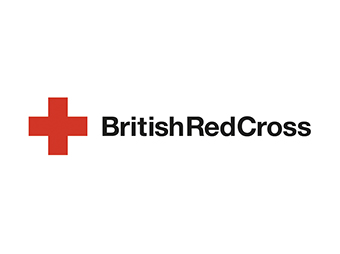
British Red Cross
Learn more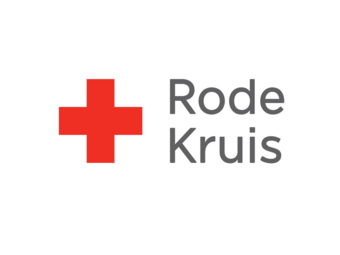
Netherlands Red Cross
Learn more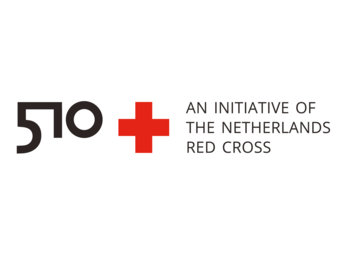
510 data team Netherlands Red Cross
Learn more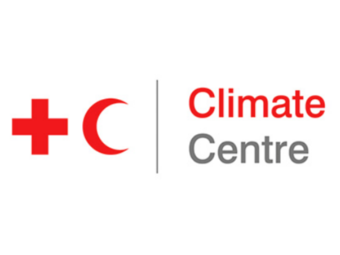
Red Cross/Red Crescent Climate Center
Learn moreSupported by



